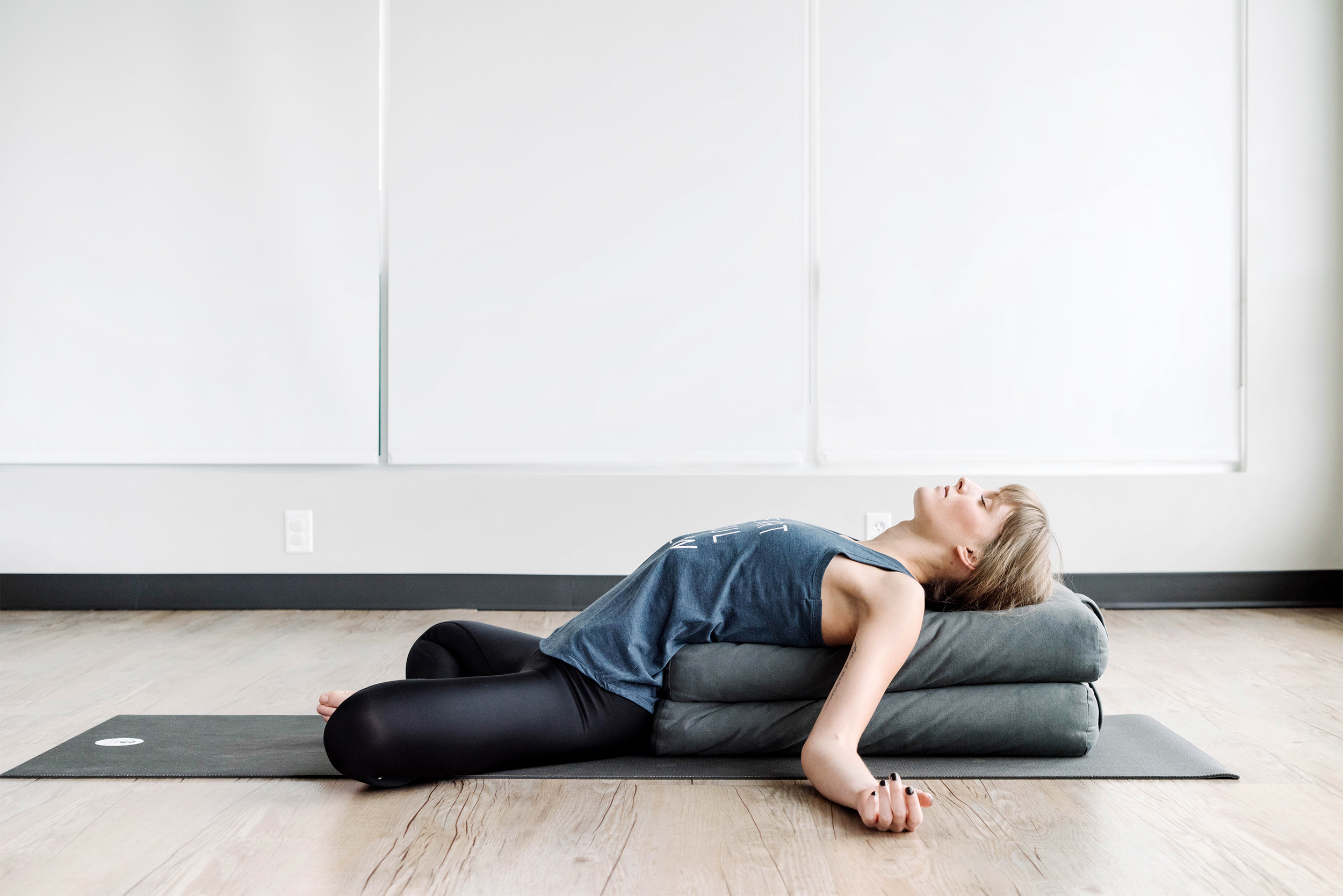February 5th, 2018

An Introduction to Restorative Yoga
“In day to day life many of us are used to moving quickly and constantly, whether from place to place, or thought to thought.”
If you were alive in the late 90s, you are probably a little familiar with the terms yin and yang, or as we said back then, “yingyang.” In Chinese Philosophy, yin and yang are used to describe how opposites can complement or even necessitate each other. Yin energy is cool and dark, associated with the moon, while yang energy is bright and hot, associated with the sun. A vinyasa class would be considered a yang style of yoga, whereas restorative is a yin practice.
This can get confusing in the yoga world, because there is also a type of yoga called “yin” yoga. To make things even more confusing, yin yoga and restorative yoga look very similar from the outside. While these two styles of yoga are both yin practices, they serve different purposes.
| YIN | RESTORATIVE |
|---|---|
| Postures typically held for approximately 5 minutes | Postures typically held for 6-10 minutes |
| Intense sensation – deeply working into connective tissue | Mild sensation – stretches are gentle and subtle |
| The use of props varies | Props MUST be used so the body is fully supported |
| Not ideal for people with acute injuries or pregnant women | Appropriate for everybody (be sure to let your teacher know about any injuries or conditions that may affect your practice) |
| Helps the body reach optimal wellness | Focuses on healing physically and mentally |
Benefits of restorative yoga include: improved flexibility, better sleep, and reduced anxiety. However, restorative yoga can also be a very challenging practice. In day to day life many of us are used to moving quickly and constantly, whether from place to place, or thought to thought. It’s not uncommon to experience a bit of panic when you settle into your first pose in a restore class and realize, “I am stuck here for the next hour.” These thoughts can be calmed with a few handy meditation tools that you can bring into your restorative (or even vinyasa) practice.
A Beginners Guide to Meditative Yoga
- Focus on your breath. The breath is temporal: you can’t breathe yesterdays breath or tomorrow’s breath, so this focus automatically draws awareness to the present moment.
- Focus on your breath (part II). Your breath is part of your autonomic nervous system, meaning that it happens whether or not you’re thinking about it. However, we also have the ability to control our breath. Have you ever been surprised, scared, or agitated and noticed that your breath was fast and shallow? We can use this connection in reverse; by slowing and smoothing out the breath, we can calm the autonomic nervous system.
- If your mind is busy, give it something to focus on! A simple visualization is a great way to do this. One of my favorites is to imagine a glowing ball of light somewhere in my body (heart, belly, throat, etc.). As I inhale and exhale, I imagine that ball of light growing and shrinking. Not a visual person? Use a mantra! My favorite is repeating silently to myself “I am breathing in” on inhales, “I am breathing out” on exhales. Feel free to get creative with both mantras and visualizations!
- Remind yourself that this is a practice. Like everything you do, clearing your mind or focusing on one thing (breath/mantra/visualization) takes practice. When you notice that your mind is elsewhere, don’t beat yourself up! Simply start again from where you are.

Written by Meraki teacher Kim Graves.
Join Kim on Tuesdays at 8.15pm for Restore Flow.
